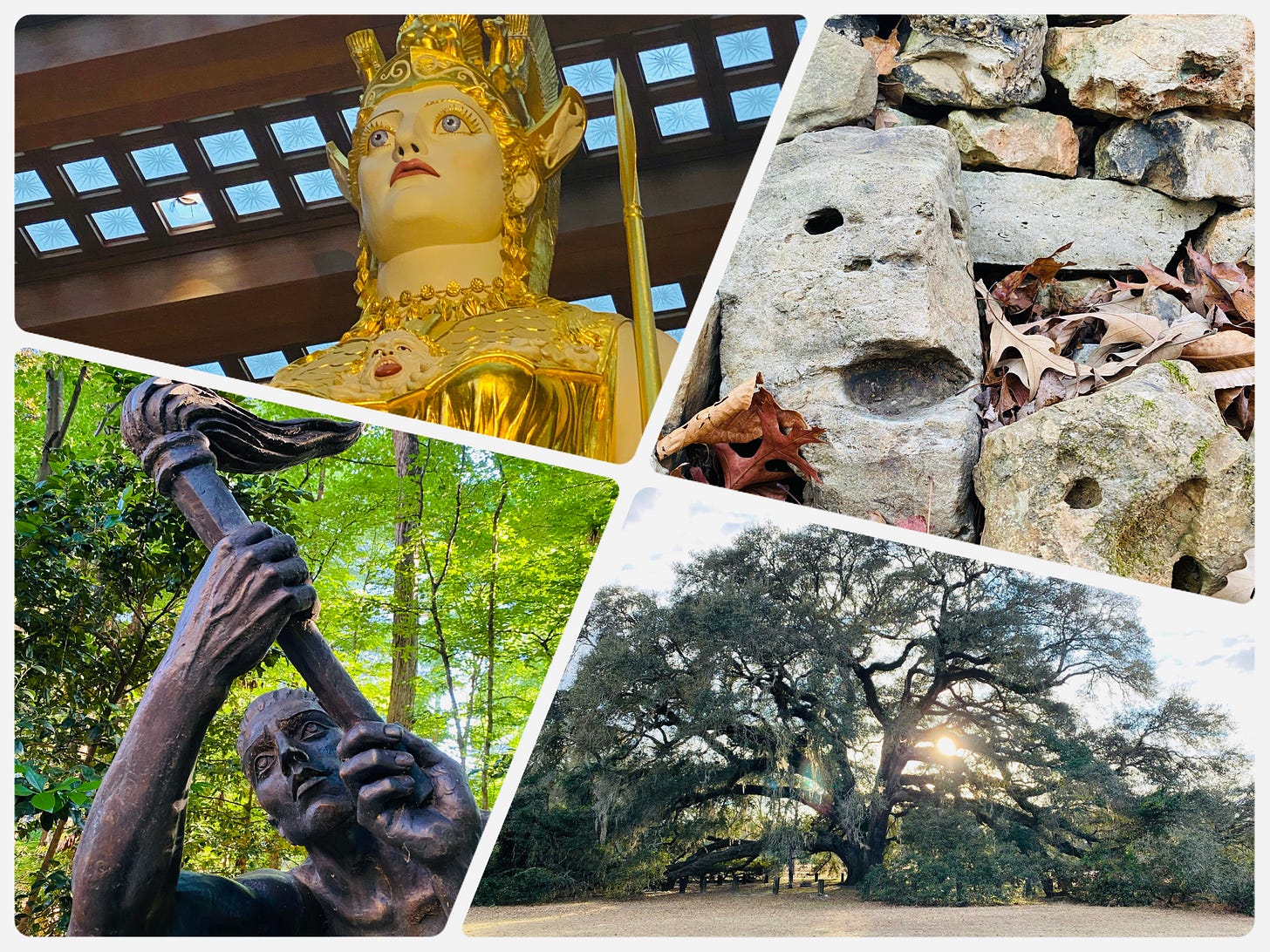Definitions
sacred - from Latin sacer (“set off, restricted”)
As a pagan living in the United States, finding sacred sites can be difficult. Christian churches abound but there are very few spaces that qualify as full time standing temples dedicated to ancient divinities. Unlike Britain and other European countries, we have very few standing stone sites or holy wells to even reclaim from monotheistic traditions. We certainly don’t have the plethora of ancient temples dotting the landscape of Greece or the sands of Egypt.
One could argue that the sacred is found everywhere from the tree in your backyard to the dandelions wildly reclaiming spaces in concrete. The pagan or witch also creates sacred space, oftentimes consecrating something as simple as their living room as a temporary container for magic or devotion. Sacred space at its root is space set apart after all, made hallowed for our intention.
However, there is value in pilgrimage. By taking journeys away from our everyday routine, we free our minds to re-imagine what’s possible and find awe in sites far different from our everyday views. As often time worshipers of the lost buried traditions and gods, we can’t just fire up a Google search and find a site nearest to us with ease. We also often have to grapple and wrangle with what sort of travel would be meaningful for us along with being compatible with our price range. Carbon footprint is also a concern with wanting to preserve the resources we have left on this earth.
I’m hoping this series will be helpful in if nothing else sparking further conversation around where we can visit to feel the presence of the divine. Below, I’d like to go over some guidelines of where I’ll be covering and the types of places.
Types of Locations
I spent a fair amount of time in the state of Alabama and will begin with documenting some of the sites I found in the heart of evangelical country if for no other reason than to illustrate that, with some creativity, it can be done. I’ve recently moved to the mid-Atlantic, however, so at a certain point the content will shift over to what I discover in my new locale.
I want to specifically call out that I will not be putting the sacred sites of indigenous Americans on this list. While sites like Moundville Archaeological Park and Cahokia Mounds are beautiful places to visit that resonate with a spiritual power and I highly suggest visiting them, I personally do not feel it is appropriate to impose Western magical traditions or religions on these places. Sites such as Serpent Mound in Ohio are still the victims of colonization as Christians try to "release the curses on the land". Philip Yenyo in the linked article also mentions feeling the land has been disrespected by new age and pagan groups as well.
So, what sorts of sacred sites will I be covering? The types of spaces covered will focus on sites such as statues of ancient gods, trees and places set aside now for contemplation. Even if a place is pagan friendly, I have not found any that label themselves as likely to avoid invoking evangelical furor or to attract a larger secular audience.
I will also call out the cost of each place visited. Many are free to visit while other have a nominal fee. If I had to get accommodations for a place to stay, I’ll note what the costs were for that portion. While I will blog if I get around to visiting places outside of the US such as my great desire to visit Avebury and the trees of Tolkien, they may not be included in this list as the attempt here is to re-imagine sites, not just take commonly accepted areas.
Additional Resources
Druids In Cars Going to Festivals by Rev Michael J Dangler and Rev Jan Avende created a Google map of publicly available pagan statues. This is a good place to start and where I began looking.
John Beckett has a thoughtful essay titled Pilgrimage and Convocation that further explores the themes of visiting sacred sites.





